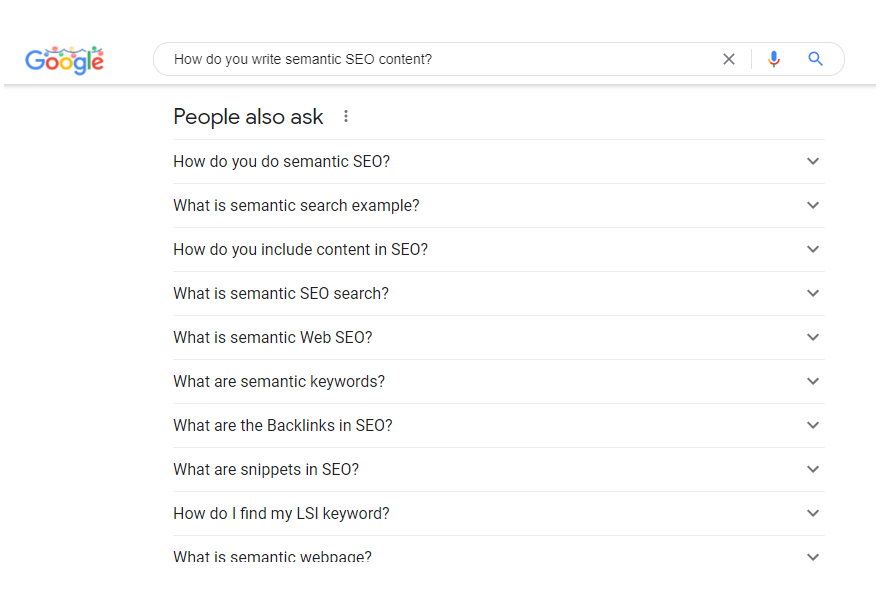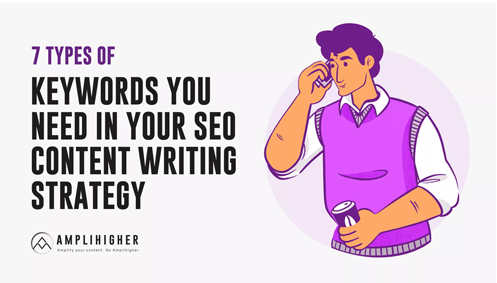Here’s The Kind of Content that Google REALLY Wants to See
Updated August 13, 2024
Marketers, entrepreneurs, and copywriters alike are in a love-hate relationship with Google. On one hand, we’re constantly cursing them for their ever-changing algorithms, and on the other hand, we really want Google to like us.
The thing about Google, though, is that they’re far more transparent than many would like to believe. In fact, Google pretty much spells out exactly what they’re looking for and exactly how you can create the kind of content they want to serve their billions of users. The information is there…you just have to look for it.
For example, Google utilizes third-party Search Quality Evaluators to provide feedback on their search results so that the search giant can tweak their algorithms to deliver the best, most relevant content. After all, that’s been the goal of search engines since the dawn of the internet.
And best of all? The guidelines provided to these Search Quality Evaluators is publicly available.[1]
If you’re a marketing agency planning content for your clients or you’re an entrepreneur going the DIY route, understanding what Google is really looking for will help you scale the ranks of search engines (and subsequently, your business).
What Kind of Content Does Google Want?
Let’s first talk about why Google wants to provide the best, most relevant content to their users.
The more users trust Google, the more they’ll use it. The more users Google has, the more advertising they can sell. And the more advertising they can sell, the more money they make and the bigger their company grows. Like any business, Google has their bottom line in mind. That’s why their algorithms are constantly changing; they want to stay ahead of the game so that they can remain the market leader they are.
In short, the better the user experience, the better for Google. And Google ranks content that helps them provide that customer experience.
So, let’s get into what kind of content Google actually wants to see.
First, Google wants to see original content.
Think of the old saying “there are no new ideas, just new ways to present them.” This means that even if you’re writing on a topic that’s already been written about, you put your own spin on it. You make it your own. You add your perspective. You create a new way to think about it or present it.
This means writing 100% original content all the time, never copying and pasting from another source. EVER. Google picks up “duplicate content” easily, and duplicate content means your website disappears into the Google blackhole forever.
Next, Google favors accurate, comprehensive, and impeccably written informational content. Think of your blog posts and articles as their own Wikipedia page. If your blog posts answer every question that your audience could possibly have, Google is going to look at your content as more authoritative and rank you higher in SERPs.
Writing this kind of content means writing with high authority.
How Can I Write High-Authority Content?
Writing high-authority content is far easier than it sounds, albeit tedious and time consuming.
Part of writing with authority means writing well; spelling, formatting, grammar–all of it matters. Google wants to serve their users professionally presented content, not walls of texts with misspellings and nonsensical sentences.
Writing with authority also means writing informatively and with verifiable resources that back up your claims.
Remember writing all of those papers in high school where you had to include footnotes and any sources you used in your research? Google likes to see that. The Google gods want to know that you know your stuff and you have the “receipts” to prove it.
What Does Google Consider a Reputable Source?
There are a couple of virtually foolproof ways you can go about finding reputable sources to cite, but each requires discernment on the writer’s part. And all of it requires looking at your sources’ sources.
- Include the word “scholarly,” “peer reviewed,” “journal,” or “study” in your Google search. For example, if you were writing an article about cognitive sales techniques, you would include the word “scholarly” in your query. Take a look at the image below. You’ll see that the search returns peer-reviewed studies and journals, and even see how many times these have been cited. These scholarly articles are considered reputable by Google.

Try it yourself. Type in a query, and then type in the same query with the word “scholarly” included.
- Use .edu or .gov sites. Google looks favorably upon .gov and .edu sites, considering them far more reputable than your run of the mill “.com” sites. You can use the same technique as above trading out “scholarly” for .edu or .gov.
- Cite high-DA sites. This requires critical thinking on the part of the writer. Many high DA (domain authority) sites are looked at as reputable by search engines, such as known industry leaders. For example, HealthLine is a reputable source for health-related articles, although they are not a journal or a .gov or .edu site. This is because they have earned their reputation through providing high quality content citing reputable sources like the ones previously mentioned.
However, just because a site has a high DA doesn’t automatically mean that they are reputable. Do your research. It pays off.
How Can I Help My Blog Posts Rank on Google?
Beyond writing great authoritative content, there are several other factors that influence how much Google loves your content.
Google Loves Video Content
Want to 10X your blog? Include video. Google loves video even more than they love your impeccably written content. Why is that? Because search engine users love video more than they love your written content.
And remember, Google wants to serve only the most relevant content to users. Right now, what’s most relevant is video content.
That doesn’t mean, however, that you forgo written content in favor of video. Written content is still the number one way to build domain authority and ramp up your search engine results. What it does mean is using video to complement your written content.
If you have accompanying video content, include it within your blog post. For example, let’s say you write a blog post and then use that blog post as a script for a YouTube video. Include that YouTube video on the top of your blog post.
Even better if you host the video on YouTube (which is, of course, owned by Google) and then embed it on the blog.
Consistency Is Key
Google wants to see that your website is active so that it knows that you’re still relevant. Publishing consistently is key to keeping the Google gods happy. This doesn’t mean overdoing it or posting content on your blog just to do it. Every piece of content you post should have a purpose and maintain the same high level of quality.
Write For Search Engines AND Consumers
Want to write for SEO? Don’t write for SEO.
Confused?
Let’s talk about it.
Many marketers focus far too much on writing for SEO and forget to write for their audiences which has a counterintuitive effect. Google knows when you’re writing for SEO…and they don’t like it. Google is smart enough to understand context and to pick up key nuances in your writing that show that you’re writing to game their algorithm.
Remember Google’s main objective is to serve their users the best content possible, and that means content that is created for humans. By writing for your audience and providing them with real value, you’ll score better points with Google.
Here’s the trick to doing both: Semantic SEO.
Semantic content is writing for user intent instead of content that is written around a keyword. Google is smart enough now to understand context. This means that the more comprehensive your content is (remember? We talked about that earlier), the more relevant your content is to the topic.
In the earlier days of search engines, copywriters and content writers used to be able to write only with keyword saturation in mind. Those days are over. Now, Google wants to know how much value your content provides, with less emphasis on keywords.
So, how does Google know what your content is about?
Contextual clues.
For example, if you’re writing an article about YouTube and you use the word “streams,” Google knows you’re talking about technology and not about a body of water from the context in your content.
Remember in the beginning of this article where we said Google tells you what they want to see? The same thing goes for writing semantic SEO content.
Go to Google. Type in your search query. Scroll down to “People also ask.” These are the questions Google says relate to your query. Answer these questions.
Look at the image below for a visual example.

Winning With Google Means Playing the Long Game
Writing the kind of content Google likes means paying attention to the changes in algorithms, search trends, and consumer trends overall (like the big push for video content).
While keeping up with Google’s requirements might seem tedious, doing so will allow your company to reap benefits and see massive SEO content writing success
Sources:
[1] https://static.googleusercontent.com/media/guidelines.raterhub.com/en//searchqualityevaluatorguidelines.pdf





